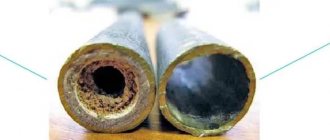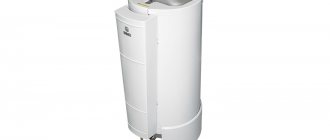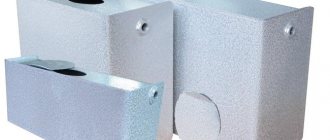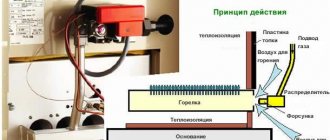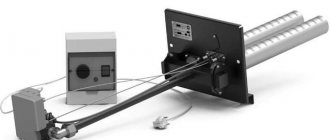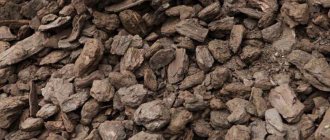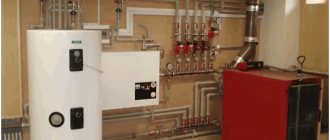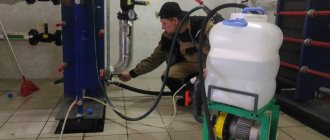Flushing the hot water boiler
For water-heating water-tube boilers, types KVGM and PTVM, chemical washing, as mentioned above, is the only method for removing scale. The fact is that these boilers do not have access to screen and convection pipes. Therefore, the only way out is to circulate the washing solution into the boiler and dissolve the scale.
In the photo: washing of KV-GM-7.56 hot water boilers by our company, in 2022
Sequence of work
Flushing boiler equipment must occur in a strictly defined order, the main stages of which are the following important points:
- complete shutdown of the boiler and cooling;
- draining technical fluid from the system;
- filling the boiler unit with a chemical solution using a special device;
- cyclic circulation of solution in the system;
- draining the used product;
- flushing boiler equipment with industrial water;
- disposal of all waste.
In fact, all stages of work do not pose any particular technical difficulties, but for a better understanding it is worth looking in more detail at what devices are used to carry out the entire washing process.
You may be interested in an article on how to clean a gas boiler.
Read an article about the features of cleaning solid fuel boilers here.
Chemical flushing of fire tube boiler
Fire tube boilers are made according to the “pipe in pipe” principle. Currently, they are widely used due to their compactness and power. Fire tube boilers are either steam or hot water.
Pictured: chemical flushing of the ICI CALDAIE GX 4000 boiler, performed by our company in 2022
How to clean the firebox and chimney?
How to clean the firebox and chimney of a gas boiler?
Combustion products remain in the firebox and on the walls of the chimney. Clean them with a brush or brushes, which you can buy in the store.
To clean a gas boiler from soot, you need:
- Turn off the gas.
- Remove the door, thermocouple, burner with nozzles.
- Remove the top cover.
- And remove the insulating sheet.
- Dismantle the chimney.
- Select a brush of the required size and clean the heat exchanger from soot. If necessary, you can even vacuum it.
- Clean the walls of the boiler with a brush and scraper.
- The pipe itself is cleaned with a brush or cable.
- Collect all nodes.
Washing of DE and DKVR steam boilers
Steam boilers can be washed with chemicals, although this is not always technologically and economically feasible. The fact is that steam boilers have a large water volume, due to two drums, which do not necessarily need to be cleaned chemically. Because of this, the cost of cleaning increases.
Our practice shows that for these boilers it is better to use the mechanical method.
In the photo: flushing the KE-10-24 steam boiler, in 2022
Dry cleaning
For dry cleaning, a special cleaner for solid fuel units is used.
There are two methods of dry cleaning:
- Cleaning agent is poured onto the fuel . During operation of the device, the crystals will react with soot and resin, crush their particles and remove them along with smoke.
- The special agent is applied to the surface of the fuel chamber, and acid-based reagents will react with combustion products remaining on the walls of the unit chamber.
One of the prerequisites for the proper operation of boiler equipment is timely flushing of boilers from scale, cleaning of soot, carbon deposits and resins. The formation of deposits, unfortunately, cannot be prevented 100%; all existing water treatment methods only reduce the intensity of this process, but do not cancel it. In turn, these layers significantly reduce the service life of boilers and heating systems, reduce the heat transfer coefficient, which leads to increased costs and premature failure of equipment.
What boiler equipment looks like without regular cleaning
We provide service for boilers of the following brands:
At what thickness of scale are boilers flushed?
1. As a rule, water-heating water-tube boilers are washed when their heating surfaces are contaminated by 800-1000 g/m2 or more, or when the hydraulic resistance of the boiler increases by 1.5 times compared to the hydraulic resistance of a clean boiler (according to RD Inter RAO).
2. Fire tube boilers, the manufacturer recommends cleaning them in accordance with the regulations of the country in which they are operated.
3. Washing of drum-type steam boilers: DE and DKVR is carried out when the scale thickness is more than 0.5 mm.
Booster Summary
This is very rare and expensive equipment. If you intend to buy it, then you will expect expenses in the range of 40,000 - 90,000 rubles. And for everyday tasks this is a rather unprofitable solution.
The booster itself is a container with a built-in pump that provides a change in the flow vector. Because of this, the efficiency of washing increases significantly. The devices are resistant to any reagents.
The most popular models are presented below:
| Booster | A country | Productivity (liters per hour) | Tank volume (l) | Working pressure (bar) | Price tag (RUB) |
| PIPAL PUMP ELIMINATE 20 V4V | Italy | 2600 | 18 | 1 | 38 000 |
| BWT Cillit SEK 28 | Germany | 2400 | 20 | 1,5 | 57 000 |
| TM Aquamax | Italy | 5000 | 30 | 1,2 | 53 500 |
How to determine the thickness of scale in boilers?
1. To determine the degree of contamination of the pipes of water-heating water-tube boilers (ZIO, NR, PTVM, KVGM), control cuttings are made. To do this, pipe samples with a length of at least 0.5 m are cut out.
In the photo: control cutting from the PTVM-50 hot water boiler
The number of these samples should be sufficient (but not less than 5-6 pieces) to assess the actual contamination of the heating surfaces. It is mandatory to cut samples from the screen pipes in the area of the burners, from the top row of the upper convective package and the bottom row of the lower convective package.
These areas are the most temperature-stressed, so they are likely to experience accelerated scale formation. The need to cut an additional number of samples is specified in each individual case depending on the operating conditions of the boiler.
2. In fire tube boilers, for these purposes, the top hatch is opened or, for example, the safety valve is removed (if there is no hatch) and the smoke pipes are inspected. In high-power boilers, it is possible to get inside the boiler and conduct a visual inspection. If this is not possible, a video endoscope is used for these purposes.
Pictured: inspection of the LOOS UL-S 10,000 fire tube boiler before flushing
3. The easiest way to determine the thickness of scale in steam boilers. To do this, you just need to open the upper and lower drum and carefully examine the convective pipes at the top and bottom.
In the photo: scale in the boiler DKVR-10/13
Mechanical cleaning
Prices
from 18,000 ₽
(including the cost of reagents)
The most common and most economical method of cleaning a boiler, which does not require large expenditures and fully meets all cleaning standards. This method requires stopping the heat exchanger, cooling it, draining the water and partially disassembling it. Mechanical cleaning of the boiler is carried out using the EKR-2 installation and mechanical tools.
Mechanical descaling of boilers is carried out using two types of tools. Hand tools - scrapers, scrapers, metal brushes. Mechanical tools include fixed and split heads driven through a flexible shaft by a two-speed asynchronous electric motor or air turbine. During mechanical cleaning, first of all, the walls of the drums and collectors are cleaned. For this purpose, special OP (open surface) heads are used.
The OP heads are equipped with cutters mounted on an axle. When rotated by an electric motor or air turbine, the cutters also rotate together with the head, using their teeth to remove scale from the walls to which the head is pressed. OP heads come in one-, two-, three- and four-row types.
Descaling using hand tools is carried out in places that are inaccessible for cleaning with mechanical tools (in the corners of partition joints, near the protruding ends of pipes, etc.).
Cleaning scale with a hammer with sharp ends, the so-called clavator, is strictly prohibited, since this damages the metal surface of the drum to a depth of 0.5...1 mm, which favors increased corrosion.
The surface cleaned with a hand or mechanical tool is washed with a stream of water, and then the quality of cleaning is checked. Screen and boiler pipes are cleaned after drums and collectors. For this purpose, other heads are used, which differ from OP heads in that the axes of the cutters are attached to the head on hinges. When the head rotates, these axes, together with the cutters, diverge to the sides due to the action of centrifugal force, are pressed against the wall of the pipe and clean it of scale. These pipe cleaning heads are called swing heads. In all cases, cleaning pipes with cutters is carried out while simultaneously washing the cleaning areas with water. At the same time, the cones are cooled and scale is washed away, which clogs the space between the teeth of the cones. During cleaning, the flexible shaft should not be passed into the pipe below the secured clamp. This is necessary in order to prevent the head from coming out of the lower end of the pipe and breaking the cutters.
Reagent for chemical cleaning of industrial boiler
The main requirements for the reagent for chemical washing of an industrial boiler are:
- The ability to effectively dissolve hardness salts (Ca and Mg).
- Low corrosiveness.
Having studied hundreds of scale samples that we have accumulated over 15 years of work, we took part in the development of a reagent for chemical boiler washing, which was named Kratol K boiler washing reagent.
The chemical washing reagent contains:
- Sulfamic acid.
- Complex of organic and inorganic acids.
- Corrosion inhibitor.
- Converters.
- Defoamers.
- Surfactant
Sulfamic acid was chosen as a base due to its excellent ability to dissolve scale and deposits.
Special corrosion inhibitors made it possible to obtain a record low corrosion rate for Steel 3 - 0.11 g*m2/hour!
Thanks to these advantages, we use Kratol K for chemical flushing of boilers and guarantee the quality and safety of the work!
Instructions for flushing the heating system
Pneumatic pulse cleaning scheme
There are 2 main methods for flushing the heating system, namely:
- using special hydropneumatic equipment;
- using chemical reagents.
Flushing using the hydropneumatic method
Hydropneumatic flushing of heating systems - instructionsHydropneumatic flushing of heating systems - instructions
This method is actively used by domestic housing offices and is quite effective. You just need to do everything in accordance with technology.
The principle is extremely simple: first, water is discharged from the system, then it is supplied back. A special pneumatic pump is used to “adjust” the water flow. As a result, under the influence of a fairly powerful pressure, scale and other deposits peel off, and when the water is drained, they are removed from the system.
To carry out this procedure yourself, you will need a pneumatic pump capable of pumping a pressure of more than 6 kg/cm2.
The sequence of actions is as follows.
Before starting work, you need to turn off all the taps. The end fittings are unscrewed using a wrench.
First step. We close the return valve.
Heating system line diagram
Second step. We connect the pneumatic pump to the valve installed after the valve.
Third step. We reset the return line.
Fourth step. Let the pneumatic pump build up pressure above 6 kg/cm2, and then open the valve to which it is connected.
Fifth step. We close off all the risers one by one. We do this so that no more than 10 risers are blocked at one time. Compliance with this rule will make the washing procedure as effective as possible.
Sixth step. We switch the system to reset in the opposite direction. To do this we do the following:
- close the discharge and close the valve connected to the pump, and turn off the device;
- close the open valve, and then open a similar one on the “return”;
- we reset the heating system. To do this, connect the pneumatic pump to the valve in the opposite direction, then open the valve and turn on the pump. The liquid will move in a different direction.
You can determine the required duration of rinsing by eye. Has clear clear liquid started coming out of the system? We can finish! Return the gates and valves to their original positions and turn off the pump.
Prepare a suitable container to collect dirty water. If you wish, you can connect a hose to the battery and ensure that the dirty coolant is discharged into the sewer.
Chemical wash
Chemical pipe flushing diagram
This method can be used only in two cases, namely:
- if it is necessary to clean a heating system with natural circulation, built using steel pipes. It is advisable to use chemical reagents in situations where, for any reason, there is no desire to flush the entire system. Most often, blockages are deposited in heat exchangers. The system can silt around the entire perimeter. In the second case, chemical washing will not be of much use;
- if it is necessary to restore the old heating system. Over decades of operation, pipes can become clogged and overgrown so much that the power of the pneumatic pump will not be enough for effective cleaning. It would, of course, be possible to use a more powerful pump, but no one can guarantee that the pipes will not burst under such pressure.
Wash reagent
The principle of flushing is simple: instead of coolant, a special solution containing acid and alkali is poured into the system. Then the mixture is circulated for 2-3 hours (if it is not the natural circulation line that is being cleaned, you will need to connect a pneumatic pump for this), after which it is drained and the pipes are filled with standard coolant.
Reagents for flushing and protecting heating systems
Never use such chemical mixtures to clean aluminum pipes. If the products remain intact after such washing, they will serve significantly less.
It is recommended to carry out mandatory flushing of the system of a private home at least once every 7 to 10 years.
How to determine the amount of reagent for flushing the boiler?
It is very simple to determine the amount of Kratol K reagent we use to flush boilers.
To do this, you need to measure the thickness of the scale in the boiler (see previous paragraphs of the article), multiply this figure by the heating surface area of the boiler.
The resulting volume must be divided by half (since the density of scale is 500 kg/m3) and you will get the mass of scale in kilograms
Our research has shown that to remove 1 kg of scale, 1 to 2 kg of Kratol K is required.
You can double-check this calculation using data on the water volume of the boiler.
If you have any questions, you can always contact us to calculate the amount of reagent for flushing your boiler!
As a rule, washing is carried out with an 8-10% solution of the Kratol reagent. This means that to flush a boiler with a water volume of 1000 liters, you need to use 100 kg of reagent.
How often should the heat exchanger be cleaned?
Maybe they are all right, but the most realistic option would be that the heat exchanger should be flushed when the following signs begin to appear:
- the burner in the gas boiler is on all the time;
- the circulation pump operates with a characteristic hum, which indicates overload;
- heating of radiators takes much longer than usual;
- Gas consumption has increased significantly with the same operation of the boiler unit;
- weak pressure of hot water in the tap (this symptom is applicable for double-circuit boilers).
All these points strictly indicate that problems have arisen in the functioning of the heat exchanger, and this, in turn, means that it is necessary to start flushing.
Specialist note: irregular cleaning of the device will reduce the efficiency of the gas boiler.
Chemical boiler washing technology
Acid washing technology represents methods and tools that guarantee high-quality results.
By quality result we mean the absence of scale in the boiler after washing!
Boiler washing technology involves pumping an acid solution through the water path of the boiler. Chemical washing is carried out by an external pump, using the following equipment:
- Chemical pump;
- Expansion tank;
- Acid-alkali resistant hoses;
- Shut-off valves.
Boiler washing technology consists of the following stages:
- Inspection of the boiler, taking scale samples, selection of reagent parameters;
- Delivery and connection of chemical washing equipment;
- Chemical flushing of the boiler;
- Neutralization and disposal of the washing solution;
- Water flushing of the boiler.
Depending on the thickness and nature of the scale, there may be several cycles of chemical washing with a reagent.
Materials used
An important aspect of boiler flushing is the issue of using various acidic substances.
There are the following types of acids that are used to clean boiler equipment:
- Adipic acid. This substance is diluted with water in a certain proportion, and with the help of a booster it is directly fed into the boiler. Carbon dioxide, when interacting with dirt and scale, dissolves them and then turns them into sediment, which is subsequently washed out under the pressure of process water. The most optimal option is to use a solution with adipic acid for chemical flushing of domestic heating boilers.
- Lemon acid. This type of acidic substance greatly simplifies the cleaning of the boiler unit, since it can be added directly to the reagent that circulates in the process water.
- Sulfamic acid. After circulating this reagent in the boiler equipment, it is necessary to thoroughly rinse the system and then dry it. This type of acid effectively cleans the internal surfaces of steam boilers.
- Hydrochloric acid. The concentration of the solution of this aggressive substance directly depends on the thickness of the contaminated scale. If the thickness of the deposits is 1 mm, then, accordingly, there should be a 1% solution. In other cases, the concentration of the solution does not increase, and the boiler unit is washed several times. Hydrochloric acid is optimally suited for cleaning waste heat boilers.
- Gel. This type of substance does not apply to acidic environments, however, it dissolves contaminated petroleum-based substances quite well. The main condition for using the gel substance is thorough flushing of the boiler equipment with technical liquid.
After reviewing the characteristics of chemical reagents for cleaning the boiler, we can conclude: all types of substances used are aggressive, so it is necessary to take precautions when working with them.
Monitoring the progress of chemical washing
By what criteria is the chemical washing process controlled?
As a rule, the main parameters for control are:
- Acidity of the solution (pH).
- Temperature.
- Electrical conductivity indicator.
- General hardness of the solution.
- Physical parameters during washing (turbidity of solution, release of CO2).
To measure the acidity of a solution (pH), we use indicator paper (for a rough estimate of acidity) and an electronic pH meter (for a more accurate estimate). Measurements are carried out once every fifteen minutes, which guarantees timely monitoring of the dynamics of changes in the acidity of the solution.
The logic for changing acidity is as follows: as the solution reacts with scale, the acidity of the solution decreases. Thus, if the initial acidity of the washing solution is 0.7-1 units, then by the end of the chemical washing it is 4-5 units. This means that the acid contained in the solution has reacted with the scale. When the acidity of a solution does not change for a long time (half an hour - an hour), we can say that the entire volume of acid has reacted.
Measuring acidity during chemical washing is necessary because it allows you to monitor the effectiveness of the reaction and, when a neutral environment is reached, carry out a new washing cycle.
During washing, the color and turbidity of the water is also monitored. Samples are taken before the start of washing, at the very beginning of washing, before the end and after washing the boiler with water (clarification).
Pictured: samples of the washing solution
Basic types of flushing
Scale hits the heating system multiple times:
- reduces the flow area of the pipes and heat exchanger, as a result of which the efficiency of the system drops sharply, and in some areas the pressure increases significantly;
- for the same reason, it forces the circulation pump to work with overload, which shortens its service life;
- Having the properties of a heat insulator, it worsens heat transfer, which also negatively affects efficiency and can lead to burnout of the heat exchanger.
Therefore, removing scale is included in the mandatory list of heater maintenance work. The DHW circuits of 2-circuit boilers are especially affected: here ordinary water from the pipeline is heated, in contrast to the prepared coolant, which is saturated with salts.
Signs of scale buildup on pipes and heat exchanger:
- clicking sounds are heard;
- gas consumption has increased;
- insufficient water heating;
- significant pressure drops (in heating systems).
There are two types of washing:
- regular or planned. Performed at certain intervals in order to prevent emergency situations. Does not require disassembly of the equipment and can be performed by the user himself. Typically, scheduled flushing is carried out every few years. For systems operating year-round, the time intervals between flushing are reduced;
- repair It is carried out at a critical thickness of the scale layer, when further operation of the boiler does not produce any effect or may result in an accident. It involves disassembling the equipment, therefore the participation of specialists is recommended.
Regular washing is carried out chemically using a special device - a booster.
What is the frequency of chemical boiler flushing?
The frequency of chemical flushing of boilers depends on the quality of the source water, the existing water treatment system (WTS) and the competence of the operating personnel.
If the feedwater quality indicators are observed, the interval between flushing can be 2-3 years.
In case of mixing raw water into the boiler, it is advisable to carry out annual dry cleaning!
In any case, it is necessary to inspect the internal heating surfaces of boilers annually and assess the amount of scale formed.
Why flush your heating system?
Over time, deposits form on the internal surfaces of the heating system. In the heat exchanger they lead to overheating of the boiler, in the pipes they lead to a slowdown in the circulation of the coolant. Timely flushing allows you to remove deposits and avoid accidents in the future.
The main reasons for the appearance of deposits:
- Water with a high content of hardness salts;
- Using antifreeze, mixing different antifreezes;
- Frequent replenishment of coolant due to leaks;
- Lack of maintenance to spot problems early.
If it is possible to refuse antifreeze, it is better to do so. You can also think about organizing a water treatment system.
The heat exchanger burst. Why does a cast iron boiler collapse?
Possible signs:
- The boiler, heated floors, radiators do not heat up or heat up worse;
- Interruptions in the operation of the circulation pump;
- Increased fuel consumption;
- Frequent boiler shutdowns.
At the first signs, you need to contact a specialist. If the problem is deposits, flushing will be required.
How to evaluate the result of acid washing?
The result of acid washing can be assessed by the actual state of the internal heating surfaces of the boiler after washing.
For these purposes, we use photography, video equipment, and video endoscopes, thanks to which it is possible to “look inside” the boiler.
Pictured: ICI GX 3000 boiler before flushing
Pictured: ICI GX 3000 boiler after flushing
Useful tips
Of course, using and cleaning gas boilers is a little easier than solid fuel units, which often have to be cleaned of tar or tar. However, gas models still require careful handling and timely flushing.
Experts do not advise taking on this task if you are not confident in your abilities, because mistakes cannot be made in this case.
Pay attention to your kettle, in which you usually boil water. If there is a noticeable coating on it, which reappears after each new cleaning, then this means that the heat exchanger in your boiler needs to be cleaned at least once every 2 years. If there are no deposits on the kettle, then you can get by with just one cleaning every 3 years.
When cleaning the boiler, never rub the plates with pressure or unnecessary force. Do not use rags, brushes or sponges. This is due to the softness of the records - they can be easily damaged
If there are no deposits on the kettle, then you can get by with one cleaning every 3 years. When cleaning the boiler, never rub the plates with pressure or unnecessary force. Do not use rags, brushes or sponges. This is explained by the softness of the records - they can be easily damaged.
- Experts and users more experienced in these matters advise beginners to film the entire process of disassembly (if you are disassembling the unit) and cleaning on video or take photos. Based on the footage, it will be easier for you to put the equipment back together, and most likely there will be no extra parts left.
- When cleaning the heat exchanger, it is not recommended to use tools that have sharp edges. Such objects can damage important parts of the heating unit.
- When working with acids that clean the heat exchanger of deposits, it is recommended to wear rubber gloves and a mask. Follow safety precautions. Make sure that chemicals do not come into contact with the skin or mucous membranes.
- If you decide to hydrostatically clean the heat exchanger, then you should keep in mind that under no circumstances should the critical pressure level be exceeded. Otherwise, pipes may burst.
- Do not try to make the burner hole wider by using a thick needle. Of course, after this it will be easier to clean this element, but the performance of the equipment itself may deteriorate.
- The brush is perfect for cleaning internal surfaces of any shape. It is recommended to use a tool with a longer handle - with such a device it will be much easier to reach all contaminated areas.
When assembling the pilot burner, it is important to remember one important rule: the tip of the thermal paste should be located opposite the area where the flame ignites. If you decide to clean the heat exchanger using a chemical method, then you should consider that high-quality reagents usually have a high cost
If a turbocharged boiler is installed in your home, then at the bottom you will see debris drawn into the inside of the air duct. It also needs to be removed
To do this, just use a vacuum cleaner. Some experts argue that regularly using hydrochloric acid to clean the exchanger can cause brittleness and severe wear on the metal. This must be taken into account when choosing the appropriate washing method.
- A common signal for cleaning the heat exchanger is a decrease in water pressure. If you notice this change, you should start cleaning the equipment as soon as possible.
- It is also necessary to start cleaning the equipment if the circulation pump begins to operate too noisily. This will indicate that this part is working under heavy load.
- You can use the non-dismountable method of washing only if your heating equipment does not have too serious and old contaminants. In addition, this method is not suitable for removing dirt caused by corrosion.
- After washing the unit, which you have not previously disassembled, you should neutralize and dispose of the cleaning solution immediately after carrying out all the necessary procedures.
If water flows freely, this will indicate that the inside of the pipe is free of debris. Once you have finished cleaning the necessary parts, reassemble everything in reverse order. Be sure to remove any contaminants from the inside of the boiler. Then run the equipment at full power - this must be done to make sure there are no leaks and the equipment is working properly.
To learn how to flush the heat exchanger of a gas boiler, see the following video.
